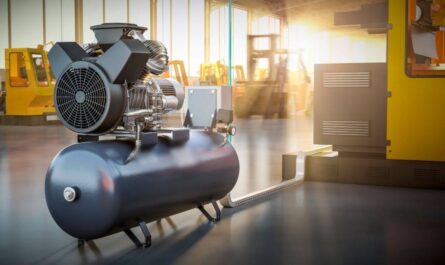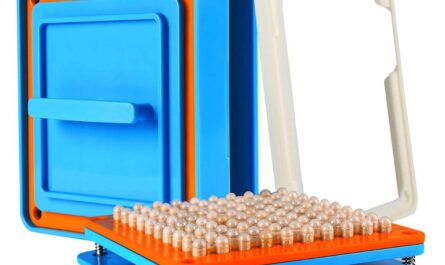Hydroelectric power or hydro-power refers to electricity that is generated from hydropower; a renewable, pollution-free source of energy. At the core of a hydroelectric power system are hydro turbines that convert the kinetic energy of flowing water into mechanical energy which is then used to spin a generator to produce electricity. In this article, we will discuss the different components of a hydro turbine generator unit and how it works to convert the power of flowing water into useful electricity.
Key Components of a Hydro Turbine Generator Unit
A hydro turbine generator unit consists of main components that work together to harness the energy of flowing water and convert it into electricity. Some of the key components are:
Turbine
The turbine acts as the driving component and converts hydraulic energy (the energy of flowing water) into mechanical rotational energy. It consists of a number of blades or buckets mounted on a central rotating hub or rotor. Common types of turbines used in hydroelectric power plants include Pelton wheel, Francis turbine, Kaplan turbine, etc. depending on the water flow characteristics.
Generator
The generator is a rotating machine that converts the mechanical energy of the turbine into electrical energy. It consists of a stationary part called stator with coils of copper wire wrapped around it and a rotating part called rotor with magnets affixed to it. The spinning motion of the turbine rotates the rotor inside the stator which induces the flow of electric current in the copper coils.
Shaft
The shaft transfers the rotational mechanical energy of the turbine to the generator. It is a robust cylindrical rod that has bearings at both ends to allow smooth rotational movement. One end is attached to the turbine hub and the other end is connected to the generator rotor.
Governing System
The governing system regulates the power output of the hydroelectric unit by controlling the water flow to the turbine. It automatically adjusts the wicket gates or guide vanes of the turbine as per the demand for electricity, ensuring optimal operation.
Water Intake and Penstock
Water from a reservoir, dam or river is diverted to the turbine through a water intake structure. It passes through a pressurized tunnel called penstock that leads the water at high pressure towards the turbine runners for efficient conversion of hydraulic energy.
How it Works
The working process of a hydro turbine generator unit involves the following main steps:
- Water from the water source enters the water intake and flows through the penstock under hydrostatic pressure.
- The high-pressure water jet impinges on the turbine blades or buckets to spin the turbine runner assembly. At the same time, the kinetic energy of flowing water is converted into rotational mechanical energy.
- The turbine shaft transmits the rotational torque to the connected generator rotor.
- Inside the generator, the spinning rotor cuts magnetic flux lines and induces electromotive force (EMF) in the stationary windings, causing electrons to flow and generate electricity.
- The produced electricity is stepped up to high voltage levels using transformers for long-distance transmission through power lines.
- The governing system adjusts the guide vanes or wickets according to demand to maintain a constant turbine speed and output power.
- Water after passing through the turbine is discharged downstream as tailwater through draft tubes.
Components of Generator
While the generator itself is an important component of a hydroelectric system, we will discuss its internal components and their working in more detail:
Stator
The stator is the stationary outer portion of the generator which consists of laminated core steel and bundles of insulated copper wires wound in slots. Round laminated steel cores reduce eddy current losses.
Rotor
The rotor is the rotating inner part made of solid steel or cast aluminum with embedded magnets or electromagnets. It rotates within the stator winding due to rotation of the turbine shaft.
Coils/Windings
The stator houses coils of multi-stranded copper or aluminum wire carefully wound in its slots following specific winding patterns to maximize EMF generation. Separate windings are connected to form phases.
Slip Rings
In wound-rotor generator configurations, slip rings and brushes are used instead of direct interconnection of rotor windings. Slip rings allow the transmission of current from the spinning rotor to the external circuit.
Bearings
Robust ball or sleeve bearings support the heavy rotating parts like rotor and shaft. They facilitate smooth rotation with minimal friction and prevent vibration. Oil or grease lubrication maintains continuous bearing operation.
Advantages and Applications
Hydroelectric power systems translate the naturally replenishing power of flowing water into clean electricity in an economically viable manner. Some key advantages of hydro power include:
– Renewable source of energy harnessed without depleting natural resources
– Reliable base load power generation with long lifetimes exceeding 50-100 years
– Virtually no air or water pollution caused during electricity production
– Flexible to operate in both peak load and base load duties
– Play an important role in meeting global renewable energy targets
Hydro turbine generator units are widely used in large, medium, and small-scale hydroelectric power plants based on available water resources. They help electrify both on-grid and isolated off-grid communities globally in an eco-friendly way.
About Author - Money Singh
Money Singh is a seasoned content writer with over four years of experience in the market research sector. Her expertise spans various industries, including food and beverages, biotechnology, chemical and materials, defense and aerospace, consumer goods, etc. LinkedIn Profile


 by
by 


